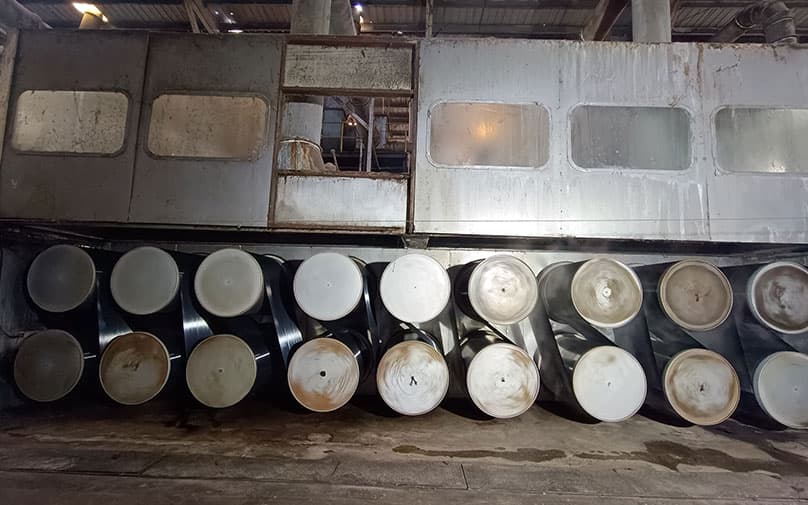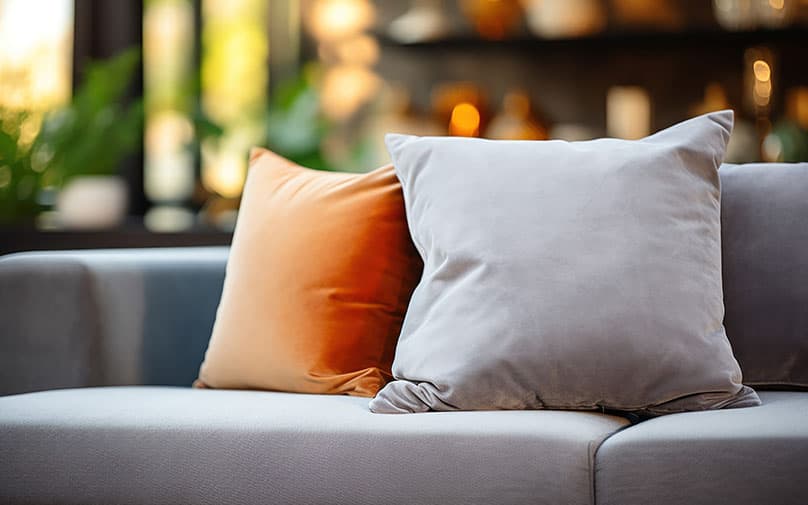The Science Behind Micro Siliconized Fibre: How It’s Made and Why It Matters
Everything is about comfort these days. Isn't it?
From premium bedding and plush cushions to cosy quilts and soft toys, consumers are choosing products that feel good to touch, hold, and rest on. Comfort isn’t a bonus anymore. It’s expected. And in most of these products, comfort depends on one crucial ingredient… Micro Siliconized Fibre, or MSF.
If you manufacture comfort-related goods, you already know that filler fibre plays a central role in product performance. But what many don’t realize is how technical that choice really is. The quality, feel, and durability of MSF can either elevate your product or leave it struggling to meet customer expectations.
So let’s look at what MSF actually is, how it's made, and what to pay attention to when choosing the right supplier.
What Is Micro Siliconized Fibre?
Micro Siliconized Fibre is a fine-denier polyester staple fibre that is treated with a thin layer of silicon. The micro aspect refers to its very small diameter, which makes it soft and light. The siliconised coating adds smoothness and allows the fibers to move freely against each other, giving the final product a lofty, plush feel.
Used primarily as a filling material, MSF is commonly found in cushions, quilts, comforters, bedding, and upholstery product fillings. It has a soft hand feel, good volume recovery, and flows smoothly during stuffing, which helps in shaping and consistent filling.
For manufacturers, this combination of softness, flow, and bulk offers a reliable way to deliver comfort while maintaining production efficiency.
How MSF Is Made: A Look Into the Process
Understanding the science behind MSF helps explain why some fibers perform better than others. Here's a breakdown of how high-quality MSF is made:
1. Raw Material Selection
The process starts with polyester, often from recycled PET bottles. At JB Ecotex, post-consumer bottles are cleaned and processed using a mechanical recycling system that ensures purity without harmful additives. Using recycled input helps reduce resource waste while maintaining fiber performance.
2. Extrusion and Filament Formation
The polyester is melted and pushed through spinnerets to create thin, continuous filaments. The diameter of these filaments determines the fineness of the final fiber.

3. Crimping
The filaments are crimped to introduce waviness, which gives the fiber its bulk and bounce. This is what helps MSF retain shape and volume inside a cushion or quilt.
4. Cutting and Staple Formation
These crimped filaments are cut into short, uniform lengths to create staple fiber. Consistent staple length makes production easier and ensures uniformity in the end product.
5. Siliconizing Treatment
The fibers are coated with a light silicone finish. This treatment allows fibres to move smoothly and prevents clumping. It also contributes to that soft, smooth texture that consumers love.
6. Drying and Packing
Finally, the treated fibers are dried, cooled, and packed in standardised formats, ready for shipping to manufacturers.
Each step needs precision and consistency. Variations in temperature, crimping settings, or silicone application can result in fibers that behave unpredictably.
Why Manufacturers Are Switching to Recycled Polyester MSF
For many manufacturers, sustainability is becoming just as important as softness or loft. JB Ecotex’s MSF is made using , processed with recycling systems. This makes it a more environmentally responsible choice compared to virgin polyester, especially when performance is not compromised.
Choosing recycled MSF also helps brands align with customer values and market trends. It's a cleaner supply chain without adding complexity to production. However, we always encourage buyers to verify recycling claims and ask for transparency in sourcing.
How to Identify High-Quality MSF
There’s no shortcut to quality. But there are clear ways to tell when you're working with premium fibre.
1. Even Fiber Thickness
A good MSF batch has a uniform denier. Irregularity here leads to uneven texture in cushions or quilts.
2. Staple Length Consistency
Shorter or mixed-length staples clump easily. Consistent length ensures smoother filling and better product structure.

3. Volume Recovery
After compressing, the fiber should bounce back quickly and hold its original shape over time.
4. Smooth Movement
Siliconized fibers should feel smooth when handled and flow well through machinery, avoiding jams or blockages.
5. Odor and Cleanliness
Clean, well-processed MSF should be odourless and free of visible contaminants.
These are the basic markers of performance. And for manufacturers, catching inconsistencies early helps avoid poor consumer feedback later.
What Sets Premium MSF Manufacturers Apart
Premium manufacturers go beyond just hitting the numbers on paper. They deliver on consistency, technical support, and production-scale reliability. Here's what defines a better MSF partner:
1. Batch Control and Traceability
Fiber properties should be consistent from order to order. Good manufacturers log each batch and monitor variation.
2. Support for Application Testing
Some MSF works better in pillows than in comforters. Top suppliers will help you test the right version for your use case.
3. Sustainable Sourcing with Proof
If recycled fibre is part of your product story, your supplier should offer clear documentation and traceability.
4. Responsiveness and Lead Time Management
Premium partners don’t just supply fibre, they support your production timelines with reliability.
JB Ecotex provides consistent, tested MSF at scale. We’ve built systems which aims to manage both quality and demand, making us one of the MSF suppliers in India for comfort-focused brands.
Applications of JB Ecotex MSF
Our MSF is designed to perform across several use cases:
1. Cushions and Pillows
Softness and loft retention are essential here. Our MSF is made such which keeps its bounce even with use.

2. Quilts and Comforters
Warmth without heaviness. The micro-denier profile and crimping give volume without bulk, making for breathable, cosy bedding.
3. Beddings and Mattress Toppers
For large surface areas, consistency is key.
4. Soft Toys and Upholstery
Used in products that require shape and resilience, our MSF aims to delivers the right mix of form and softness.
As one of India’s MSF producers, our focus is on performance you can see and feel backed by processes you can rely on.

Closing Thoughts
Comfort is no longer just about how a product looks. It’s about how it feels, how long it lasts, and what it’s made from. In a competitive market, MSF becomes more than a material choice. It becomes part of your brand story.
JB Ecotex's approach to MSF combines material science, sustainability, and customer insight. We believe fibre should do more than just fill space. It should create lasting comfort—quietly, dependably, and beautifully.
If you’re building products that promise comfort, let’s start with the fiber that helps you deliver it.
